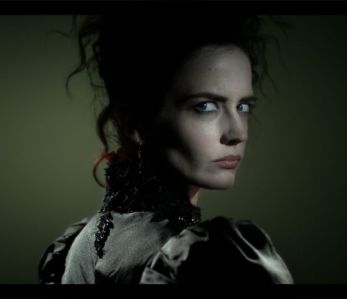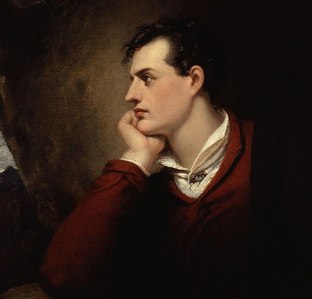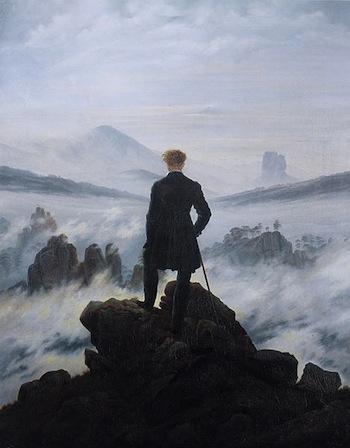“Can women have Byronic personalities?”
As seemingly random and specific as it sounds, I’ve actually wondered this on a few occasions. When I went through a big Byron phase a while ago, I was arguably more fascinated with his life and influence on (Gothic) pop-culture than I was by his writings. I found it amazing that an individual could change the landscape of Western culture and media– for centuries to come– almost entirely because of his unique personality. Romantic individualism personified.
One of the characteristics of the Byronic personality is a mysterious allure, but the whole package of the Byronic character has a sort of unyielding magnetism of its own. And perhaps this is why I first wondered about the Byronic heroine– a part of me wanted to see some of those same traits in myself. They are certainly not all admirable, but they were real, and complex.
I also came to wonder about the existence of the Byronic Heroine while watching, reading about, and writing about Penny Dreadful and its leading lady, Vanessa Ives. She is different from the heroines of most Gothic works… she is dark, mysterious, has a slew of existential and spiritual turmoil, yet she is good.
But can a female really have the traits of a Byronic hero, or can this personality only exist within the context of being male?
Here is a brief rundown of how Byronic heroes are usually portrayed:
- Highly intelligent and perceptive
- Introspective and self-critical
- Magnetic, mysterious and charismatic
- Arrogant and self-centered
- Moody, prone to bursts of anger
- Depressive and cynical
- Disrespectful of authority and societal norms
- Emotionally and intellectually tortured
- Traumatized by a mysterious past / Haunted by a secret
- Spiritually doubtful
- Overall just dark and brooding.
Famous Byronic heroes from Gothic literature include Heathcliff from Emily Brontë’s novel Wuthering Heights, Mr. Rochester from Jane Eyre (The Brontë sisters had a type), Claude Frollo from Victor Hugo’s The Hunchback of Notre Dame, and the Phantom from Gaston Leroux’s novel The Phantom of the Opera. The Byronic hero has often been the model for vampire characters (more on that later).
You can probably identify countless Byronic characters from books, movies, and TV shows you’ve watched. They’re among the most compelling and fascinating characters out there.
But… are any of them female? Or is it simply a prerequisite that the Byronic hero be male?
In Gothic literature (and in most literature/films until a few decades ago), females have been represented as one of two opposing binaries: the Victim or the Vamp. Good or bad. The innocent victim-maiden of the Gothic novel is epitomized by characters like Adeline and Emily in Ann Radcliffe’s novels, while the “vamp” is embodied by Matilda in The Monk, and by Le Fanu’s Carmilla.

Carmilla, epitome of “the vamp”, attempts to prey on Laura, the innocent victim.
The vamp has historically encompassed witches, sorceresses, succubi, demonesses, vampires, and more recently, femme fatales. The common thread? This threatening woman destroys her victims through her seductive allure as much as through her diabolism.
It makes sense that women would be portrayed as either binary given their stifling social roles. For centuries, women could only express themselves or exercise power through few outlets; namely, seduction and sexuality. This, of course, was seen as threatening, and was villified in representations of vamps and femme fatales. Men probably also feared that women who wanted power would seek to achieve it in secret through supernatural means, like witchcraft or vampirism.
But now as women have more freedom (and more freedom of representation), we are seeing much more well-rounded female characters. It seems we might even be able to take these two opposing binaries, the vamp and the victim, and collapse them into a more realistic, compelling middle ground. In fact, if we keep the cunning, intelligence, and mystery of the vamp and combine it with the redeeming characteristics of the victim, it would seem we would have the Byronic heroine.
So, back to Vanessa Ives. Taking a look back at the list of characteristics, it seems she checks many of the boxes. Magnetic and seductive? Check. Traumatized by a mysterious past and haunted by a secret? Check. She is highly intelligent (her powers of perception are otherworldly), she often struggles with personal integrity, she is spiritually tortured, she emits an air of dominance yet she is extremely vulnerable. Despite the pain she has caused, she does not act out of selfishness, and she always allies herself against “evil”, even while it dwells within her. She is not all dark nor is she pure light. She is a complex mix, and more sympathetic and appealing because of it.

Do you think Vanessa is a Byronic Heroine? What other female characters would you nominate? Let me know in the comment section below!





Thanks a lot for this! Really helped for my english essay research 🙂 The Byronic hero/heroine is a very interesting concept. I can’t really think of a Byronic heroine from a novel right now, but I think that the Widow/Natasha Romanova from the Marvel Universe would fit the criteria 😀
LikeLike
Thanks for your feedback, and glad this helped with your essay! The Byronic figure is definitely very compelling, and seems to appeal to a lot of people. I’ll have to read up more on Natasha Romanova!
LikeLiked by 1 person
Pingback: What Will ‘Crimson Peak’ Add to the Gothic Canon? | Tastefully Gothic
I think Jane Eyre herself would be a Byronic Heroine! She’s very intelligent, brooding and dark, self critical, doesn’t care about societal norms, and suffers from a troubled past. The only part I would say doesn’t fit her is the idea of being magnetic and alluring.
LikeLike
I think, that Nastasya Filipovna Barashkova from Dostoyevki’s ‘The Idiot’ would qualify as Byronic heroine. While of noble origin she was forced into a relationship with an older man and is regarded as ‘fallen’. She loves and is loved by two men, Rogoshin and Myshkin and decides despite better knowledge and despite outright sympathy for Myshkin for the wrong guy.
LikeLike
First of all, i really enjoyed reading your article! I’ve been wondering for myself whether female can be classified into the Byronic hero/heroine category. I agree that Vanessa Ives ticked all the boxes in the Byronic character traits. I think that the Byronic character can be applied to both male and female, but I suppose because the limited freedom that women had in the past in terms of identity and self-expression, classic literatures denied women the privilege of becoming a Byronic heroine. It’s only because Penny Dreadful is created in the 21st century that we can have Byronic female characters like Vanessa.
As in other characters that I think worth considering as a Byronic heroine, I nominate Regina Mills from Once Upon A Time. She pretty much thick most of the boxes in the Byronic character traits as well. 😀
LikeLike
Surely, Anne Lister of Shibden Hall, Halifax qualifies as a real-life Byronic female? Charismatic, fiercely intelligent, sexually predatory, adventurous and dressed all in black. She even thought Byron the greatest poet of the age.
LikeLike
Homura from Madoka Magica. A brooding and obsessive heroine who hides her emotions until they explode out in a burst. She checks every box except she lacks some self-awareness and other characters find her off-putting rather than alluring, but your example of Frollo also lacks these qualities, so I think she should count.
LikeLike
The girl from the queens gambit? Beth, springs to mind.
LikeLike